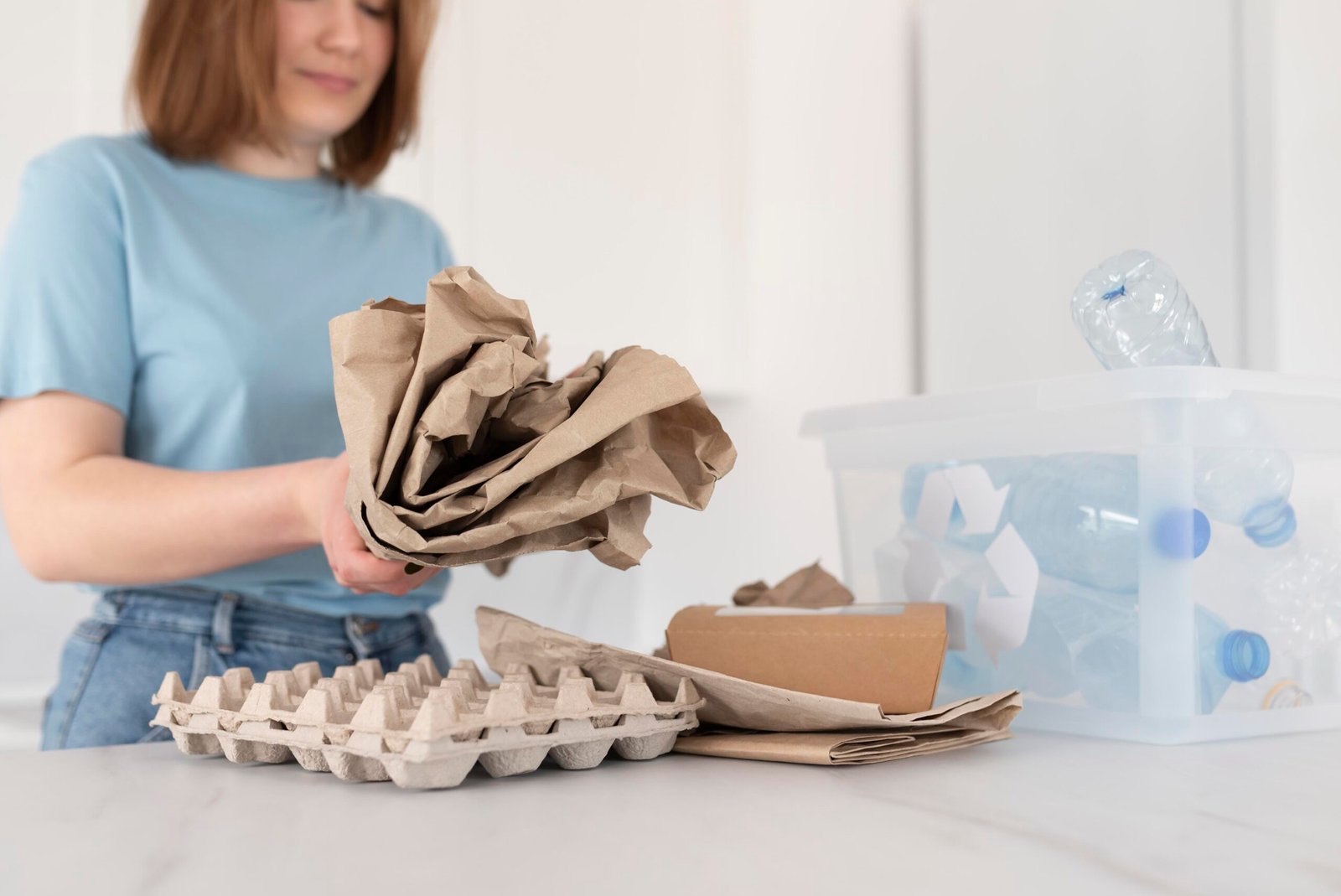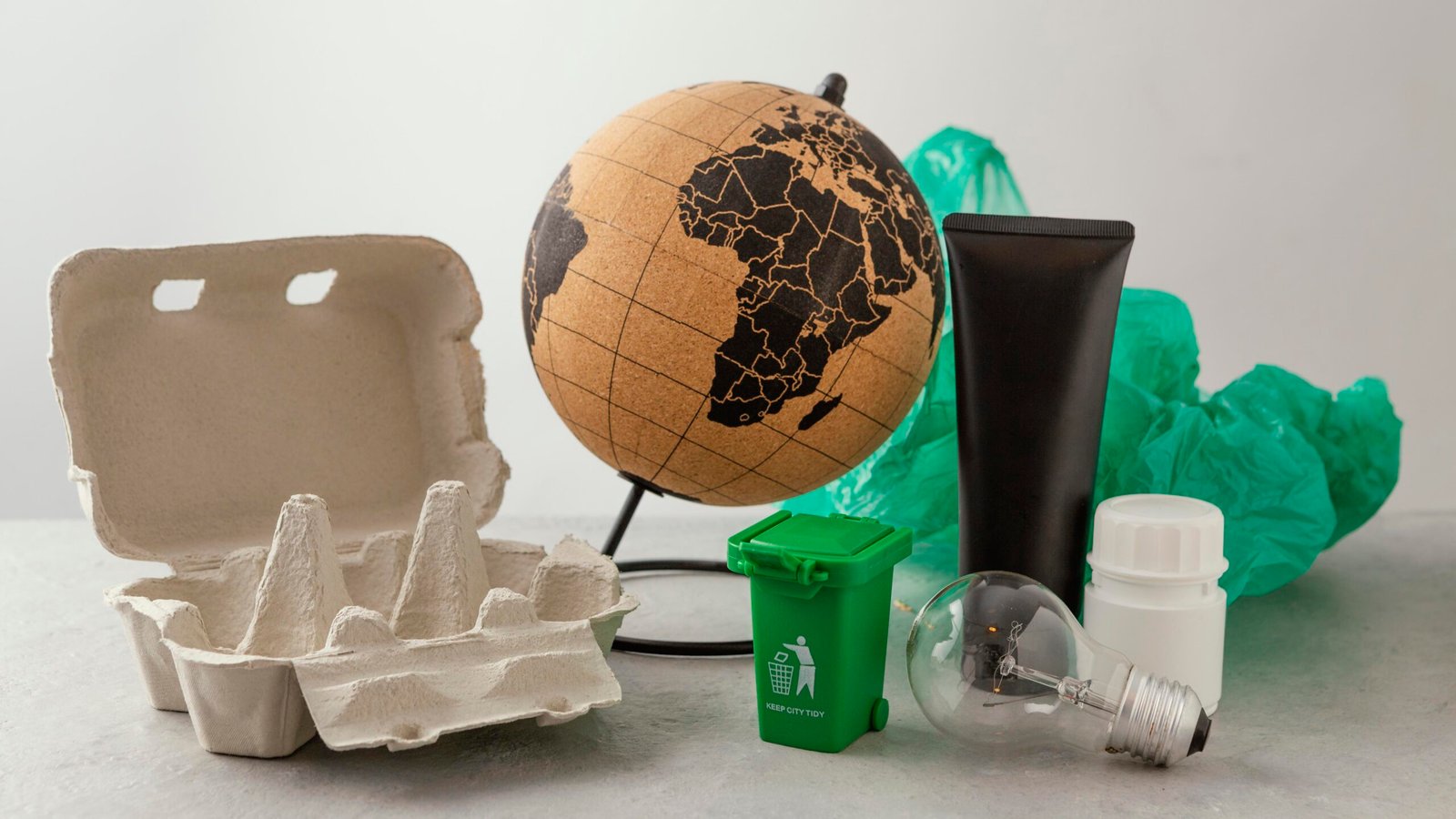Introduction
In recent years, the concept of a zero waste lifestyle has shifted from being a niche trend to becoming a vital movement for environmental sustainability. With increasing concerns about overflowing landfills, plastic pollution in oceans, and greenhouse gas emissions from waste disposal, individuals across the USA are seeking practical ways to reduce their environmental impact. But living a zero waste lifestyle does not mean overhauling your entire existence overnight. Instead, it’s about taking small, consistent steps that lead to significant, long-term change.
Understanding the Zero Waste Lifestyle
Zero waste living aims to minimize the amount of trash sent to landfills and incinerators by focusing on five key principles:

-
Refuse – Say no to unnecessary items, such as single-use plastics and excessive packaging.
-
Reduce – Limit consumption by choosing durable, long-lasting products.
-
Reuse – Give items a second life instead of discarding them.
-
Recycle – Properly sort materials that can be transformed into new products.
-
Rot – Compost organic waste like food scraps and yard trimmings.
When applied consistently, these principles can dramatically cut down on household waste while promoting a healthier, more mindful way of living.
The Environmental Impact of Waste
Before diving into actionable steps, it’s essential to understand the problem. According to the U.S. Environmental Protection Agency (EPA), Americans generate over 290 million tons of municipal solid waste annually—with nearly 50% ending up in landfills.

This waste contributes to:
-
Methane emissions – A potent greenhouse gas released from decomposing organic matter in landfills.
-
Microplastic pollution – Small plastic particles entering waterways and even food chains.
-
Resource depletion – Constant production of disposable goods consumes valuable raw materials and energy.
Embracing a zero waste lifestyle helps reverse these effects, benefiting both the planet and future generations.
Small Steps for a Big Impact
Many people hesitate to start a zero waste journey because they assume it requires extreme changes. However, simple adjustments can create meaningful results. Here are small steps that collectively lead to a big environmental impact:
1. Start with a Waste Audit
Understanding what you throw away is the first step toward reducing waste. Spend a week observing your household trash and noting what items appear most often—plastic packaging, food scraps, paper products, or single-use containers.
Once you identify the primary sources of waste, you can target them with specific changes.
2. Embrace Reusable Essentials
Single-use products are one of the biggest contributors to landfill waste. Replacing them with reusable alternatives is both practical and cost-effective.
-
Reusable water bottles – Stainless steel or glass bottles reduce the need for disposable plastic.
-
Cloth shopping bags – Lightweight and durable, these eliminate the need for paper or plastic grocery bags.
-
Beeswax wraps & glass containers – Great substitutes for plastic wrap and sandwich bags.
3. Switch to Sustainable Packaging
Packaging makes up nearly one-third of municipal solid waste in the USA. Choosing products with recyclable, compostable, or minimal packaging helps reduce overall waste.
Additionally, look for companies committed to eco-friendly shipping practices, such as using recyclable mailers, biodegradable fillers, or repurposed cardboard.
4. Compost Organic Waste
Food waste accounts for around 24% of landfill materials, yet much of it can be composted to create nutrient-rich soil. Even if you live in an apartment, small indoor compost bins or community composting programs make it possible to reduce organic waste significantly.
5. Support Quality Over Quantity
While this isn’t about acquiring more items, choosing durable, long-lasting alternatives ensures fewer replacements and less waste over time. Products made from stainless steel, bamboo, or organic cotton tend to outlast cheaper, disposable counterparts.
6. Reduce Paper Waste
Transitioning to a paperless lifestyle is easier than ever. Opt for digital receipts, online billing, and reusable notebooks to cut down on unnecessary paper consumption. If paper use is unavoidable, recycle it properly or repurpose it for crafts and household needs.
7. Repair Instead of Discarding
Learning basic repair skills can prevent countless items from ending up in landfills. Whether it’s mending a torn shirt, fixing a wobbly chair, or replacing a small appliance part, extending an item’s life is one of the most impactful zero waste practices.
8. Choose Second-Hand and Upcycled Options
Thrift stores, consignment shops, and online platforms specializing in pre-owned items offer unique ways to reduce demand for new production while keeping usable goods out of landfills. Upcycling—turning old items into something new—can also spark creativity while reducing waste.
Zero Waste in Everyday Life
Adopting zero waste practices doesn’t stop at home. These small changes can also be incorporated into daily routines:

-
At Work – Use refillable pens, reusable coffee cups, and avoid unnecessary printing.
-
On the Go – Carry a compact set of utensils, a cloth napkin, and a water bottle to avoid single-use items.
-
While Shopping – Choose bulk sections where possible and bring reusable containers.
Community-Level Impact
Individual efforts matter, but collective action has the potential to drive larger systemic changes. Communities across the USA are implementing initiatives like:
-
Zero waste stores – Offering package-free groceries and household items.
-
Local composting programs – Making it easier for residents to manage organic waste.
-
Educational campaigns – Raising awareness about proper recycling and waste reduction.
Supporting or advocating for these programs helps amplify the impact of personal zero waste habits.
The Financial Advantage of Going Zero Waste
While the primary motivation for zero waste living is environmental, there are financial benefits as well. Reusable products, energy-efficient appliances, and repairable goods often lead to long-term savings. Additionally, reducing consumption naturally results in fewer expenses over time.
Overcoming Common Challenges
Transitioning to a zero waste lifestyle may feel overwhelming at first. Some common concerns include:
-
Cost of sustainable alternatives – While upfront costs may be higher, these products often last longer, offsetting initial expenses.
-
Convenience factor – Zero waste living may require small adjustments to routines, but habits form quickly with consistent effort.
-
Access to resources – Rural areas may have limited access to bulk stores or composting programs, but creative solutions—like DIY compost bins or online refill programs—can bridge the gap.
A Lifestyle of Mindful Consumption
Ultimately, a zero waste lifestyle is about mindful consumption—questioning what you use, how you use it, and where it ends up after its initial purpose is served. By taking small, consistent steps, every household can contribute to a cleaner, healthier planet.